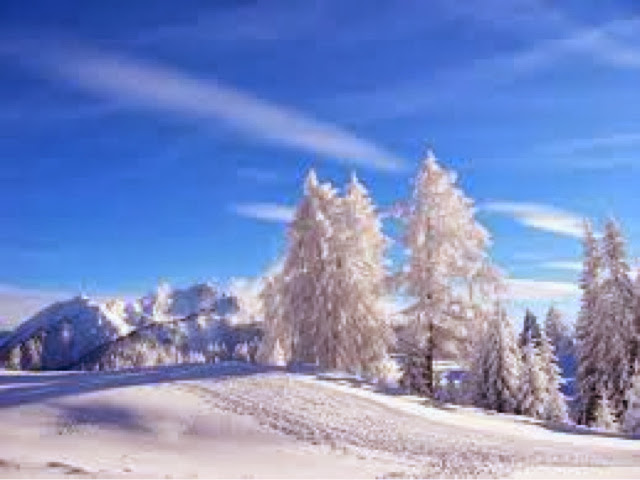People don't realize that even in the Tropics, the weather changes (very slightly but it's still there if you know what to look for). In other parts of the world of course it's very obvious.
Here's the reason for the different colour palettes for the seasons:
It has everything to do with light. The seasons all have different kinds of light, partly because of the weather, and partly because of the different colour-groups that appear in nature in the different seasons. So, let's break it down!
SPRING
Spring light is very clean and pure and soft even though it's bright, and the colors in nature are lots of pastels and pretty, vivid, yet pale colours. The pink and yellow flowers are beginning to bloom, blue and pale orange butterflies are flitting around, and animals are growing in their lighter coats and feathers and so tend to look really "new" and clean. Chicks and lambs are soft, gentle yellows and greys. The weather tends to get a bit rainy, but even when the sun is shining, there is something about the light that is bright but soft.
Spring makeup should be dewy, with soft edges and gentle highlight. The muted light makes pastels really pop, because they aren't competeing with harsh light for attention. Harsher, more neon colours will just make you look like you put your entire makeup collection on your face at once with a paint brush.
SUMMER
Summer is of course full-on, harsh sunlight. Any flowers that bloom in summer are bright orange and red and purple. The sea tends to look brilliantly blue, fruit is brightly coloured and juicy. Take your cues from nature: flowers have to be really vibrant because they need to be seen by birds and bees in order to spread pollen. Most animals are also at the height of their mating seasons at the beginning of summer, and so their coats and feathers are rich, bright colours to attract mates.
In Summer we can get away with wearing full on neon colours and bright gold. Keep the skin bronzed and highlighted so that your features don't get lost in the harsh light. The reason we need really vivid, bright colours in Summer is because, quite simply, pale, soft colours just won't show up in competition with the sharp, bright sunlight! Just be careful not to wear too any bright, clashing colours. To avoid looking clownish in bright colours, stick to one or two features and keep the rest a sexy, bronzed neutral.
FALL
Fall (or Autumn) is the most muted, diffused light of all. Suddenly everything in nature turns dark, deep, rich colours as the leaves die and the animals shed their fur and feathers to grow in their darker, thicker winter coats. Vegetables and grains signal that they're ready for harvest by turning richer, deeper shades of colour.
The muted, golden sunlight is super flattering, making makeup colours like deep plum, burnt orange, rich burgundy, deep red, burnished gold, bronze, dark forest green and richchocolate brown show up beautfully. Use highlight and contour to add dimension but make sure it's blending well. Try a really strong warm cheek, regardless of your natural undertone! You can go soft or dramatic, but stick to this palette to take full advantage of the naturally diffused, warm light of Autumn.
WINTER
Winter actually has pretty harsh light, especially noticeable in colder climates. It bounces off the white snow, and because the trees are bare and animals are either hibernating or wearing dark coats (because dark colours attract light and heat which they need in the cold to survive), the light appears stark and bright because there's nothing to diffuse it. Even when it's overcast, again because there aren't any other colours to warm the light up, it's generally a cool, bright, even white light.
For makeup, break out the drama and wear nature's colours: grey, black, dark blue, dark purple, silver, and, of course, white. Keep the skin to a satin finish because though skin does get dry in winter and you want it to look heathly, the light is quite harsh and will bounce off the highpoints of your face anyway. Subtle contour and highlight is the way to go. Wear brighter colours like Cherry Red and Royal Blue in small pops of colour on the face. Too much will look a little too heavy and harsh, but in small pops they can be really beautiful.
Bottom line: matching your makup to the palettes you find in nature is the best way to make sure it's flattering in the natural light of the season!
I hope that cleared it all up for you!












I really enjoyed reading this post, big fan. Keep up the good work andplease tell me when can you publish more articles or where can I read more on the subject?
ReplyDeleteChandeliers